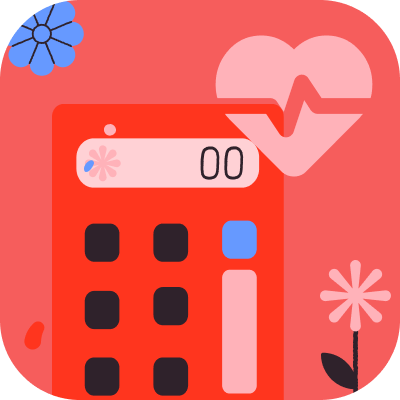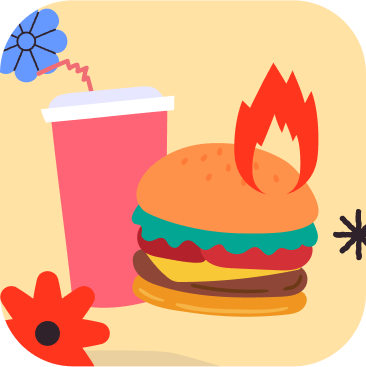Eating in cycles that alternate between periods of fasting and eating is known as intermittent fasting. It's more of an eating pattern than a diet. There are various types of intermittent fasting methods, one of the most popular of which is 20/4 Intermittent Fasting.
Through this article, let’s explore everything about the most advanced intermittent Fasting - 20/4 method, and learn how to incorporate it for incredible health benefits.
Key Takeaways:
- The 20:4 intermittent fasting, also known as the Warrior Diet, is a form of time-restricted eating where you fast for 20 hours and eat during a 4-hour window.
- A survey reports that 1 in every 4 individuals practices intermittent fasting, with the intent of losing weight and building strength.
- Though extremely effective, it is a difficult, restrictive form of fasting that is not easy for everyone to follow.
What is 20/4 Intermittent Fasting?


20/4 intermittent fasting, also known as the 20-hour fasting method, is a type of eating pattern where individuals fast for 20 hours and have a 4-hour eating window. This means that during the fasting period, individuals consume no calories, only drinking water or other non-caloric liquids. Within the 4-hour eating window, individuals can eat their normal meals and consume their required daily caloric intake.
This method of fasting is one of the more restrictive types of intermittent fasting and can be challenging for some individuals to maintain. However, it has been claimed to offer potential benefits such as weight loss, improved metabolic health, and increased mental clarity.
Why does it Work?
20/4 intermittent fasting, also known as the Warrior Diet generally works by:
- Fasting Window: During the fasting period, you will abstain from consuming any calories. This typically includes both food and beverages, except for water, black coffee, and unsweetened tea, which are often allowed to be consumed during the fasting window.
- Eating Window: The eating window occurs for 4 consecutive hours each day. Within this timeframe, you can consume all your daily caloric intake and meals.
The main concept behind this fasting pattern is to extend the fasting period significantly to promote autophagy, which is the body's natural process of cellular regeneration and repair. By extending the fasting window to 20 hours, proponents claim that it enhances fat burning, boosts metabolism, and improves insulin sensitivity.
However, it's important to note that 20/4 intermittent fasting might not be suitable for everyone. It can be challenging to adjust to such a restricted eating schedule, and it may not be suitable for individuals with certain health conditions or who require a more varied and consistent intake of nutrients throughout the day.


Benefits of 20/4 Fasting
- Weight loss: One of the main benefits of the 20/4 intermittent fasting method, is its ability to promote weight loss. By restricting your eating window to just 4 hours a day, you naturally consume fewer calories, leading to a calorie deficit and potential weight loss.
- Improved insulin sensitivity: Intermittent fasting has been shown to improve insulin sensitivity, which is beneficial for individuals with type 2 diabetes or prediabetes. By practicing the 20/4 method, you give your body a longer period without constant insulin stimulation, which can help improve insulin sensitivity.
- Enhanced cardiovascular health: Studies suggest that intermittent fasting can help lower blood pressure, cholesterol levels, and triglyceride levels, all of which contribute to better cardiovascular health. Long-term adherence to the 20/4 method may help reduce the risk of heart disease and stroke.
- Increased autophagy: Autophagy is the body's cellular repair process. Intermittent fasting, including the 20/4 method, has been shown to stimulate autophagy, which helps remove damaged cellular components and promotes overall cell health.
- Cognitive benefits: Some research indicates that intermittent fasting can have positive effects on brain health. It may promote the growth of new nerve cells and increase levels of brain-derived neurotrophic factor (BDNF), a protein that supports brain health and cognitive function.
- Simplified eating schedule: The 20/4 intermittent fasting method provides a clear and structured eating schedule, making it easier for some people to adhere to. It eliminates the need to constantly think about food and meal planning throughout the day, potentially reducing decision fatigue and promoting mindful eating.
- Increased energy: Some individuals experience increased energy levels and improved alertness while practicing intermittent fasting. This may be due to the body utilizing stored fat for energy during fasting periods.
Is it Really Effective for Losing Weight?
Yes, the 20/4 intermittent fasting method can be effective for losing weight. This method involves fasting for 20 hours and having an eating window of 4 hours each day. By limiting the time window for eating, it can help to reduce overall calorie intake and promote weight loss. Additionally, intermittent fasting has been found to have other health benefits such as improved insulin sensitivity and increased fat burning. However, it is important to consult with a healthcare professional before starting any new diet or fasting regimen to ensure it is suitable for your individual needs and health status.
Side Effects You Must Know About
While intermittent fasting can have potential benefits for weight loss and overall health, there can also be side effects when following a 20/4 fasting schedule. Some possible side effects include:
- Hunger and cravings: With only a 4-hour eating window, it can be challenging to consume enough calories and nutrients. This may lead to increased hunger and cravings during the fasting period.
- Difficulty concentrating: Some individuals may experience difficulty focusing and reduced mental clarity, especially during the fasting period.
- Low energy levels: Restricting food intake for a long period may result in low energy levels and feelings of fatigue.
- Digestive issues: Rapid changes in eating patterns can disrupt digestion and cause symptoms like bloating, gas, and constipation.
- Nutrient deficiencies: With limited time to eat, it may be more difficult to consume a balanced diet, potentially leading to nutrient deficiencies if not carefully managed.
- Disrupted sleep patterns: Some people may experience sleep disturbances or difficulty falling asleep due to hunger or changes in eating patterns.
- Negative impact on social life: Structured meal times may make it challenging to socialize with others who are not following the same fasting schedule. It's important to note that these side effects can vary from person to person, and some individuals may not experience any of them.
Difference between 16/8 and 20/4 Fasting
The main difference between a 16/8 and a 20/4 intermittent fasting schedule is the duration of the fasting window and the eating window.
In a 16/8 fasting schedule, you fast for 16 hours and have an 8-hour eating window. This means that you would typically skip breakfast and have your first meal of the day around noon, and finish eating all your meals and snacks by 8 pm. This schedule is popular as it allows for an extended fasting period while still allowing for a substantial eating window to consume all necessary calories for the day.
On the other hand, in a 20/4 fasting schedule, you fast for 20 hours and have a 4-hour eating window. With this schedule, you would likely have one large meal or a few smaller meals within that 4-hour window. This format provides a more condensed eating period and typically involves consuming all daily calories within a shorter time frame.
Both the 16/8 and 20/4 fasting schedules can offer similar benefits such as weight loss, improved insulin sensitivity, and increased fat burning. However, the 20/4 schedule requires a longer period of fasting and a shorter eating window, which may be more challenging for some individuals to adhere to. It is important to note that the best intermittent fasting schedule varies for each person, and it is recommended to find a schedule that fits your lifestyle and preferences while still ensuring you meet your nutritional needs.
Best Foods and Snacks to Eat for 20 Hours Fasting


When following a 20/4 intermittent fasting schedule, it is essential to choose nutritious foods that will provide sustained energy and keep you satisfied during your eating window. Here are some recommended foods and snacks:
- Lean Proteins: Chicken breast, turkey, fish, tofu, and eggs are excellent sources of protein that can help you feel full and support muscle growth.
- Whole Grains: Opt for complex carbohydrates like quinoa, brown rice, oats, and whole wheat bread to provide energy and promote satiety.
- Healthy Fats: Avocado, nuts, seeds, and olive oil are good sources of healthy fats that help keep you feeling full and provide essential nutrients.
- Vegetables: Load up on non-starchy vegetables like spinach, broccoli, peppers, cauliflower, and kale. They are low in calories and high in fiber, making them great for fasting periods.
- Fruits: Incorporate fruits like berries, apples, oranges, and grapes into your eating window to satisfy your sweet tooth without consuming excessive calories.
- Greek Yogurt: Rich in protein and probiotics, Greek yogurt is a filling option that can be enjoyed with fruit or nuts.
- Cottage Cheese: Cottage cheese is high in protein and can be combined with fruits or enjoyed on its own as a snack or part of a meal.
- Homemade Smoothies: Blend fruits, vegetables, protein powder, and a liquid of your choice (water, low-fat milk, or almond milk) to create a nutritious and filling smoothie.
- Hard-boiled Eggs: A quick and protein-rich snack, hard-boiled eggs can be seasoned with herbs or spices for added flavor.
- Mixed Nuts: A small handful of mixed nuts, such as almonds, walnuts, or cashews, can provide a satisfying crunch while offering healthy fats and protein.
Remember that staying hydrated with water, herbal tea, or black coffee is crucial during fasting periods.
What is the Best Time to Eat during 20/4 Fasting?
The best time to eat during a 20/4 fasting schedule will depend on individual preferences and lifestyle. However, a common approach is to have a four-hour eating window within the 20-hour fasting period.
Many people choose to have their eating window in the evening, allowing them to have a substantial meal closer to bedtime. This can help them feel satiated and promote better sleep. Additionally, having the majority of calories in the later part of the day may align with the body's natural circadian rhythm.
However, it is important to choose a time that works best for you and your schedule. Some individuals may prefer to have their eating window earlier in the day, allowing them to consume most of their calories during the morning and afternoon. Ultimately, the best time to eat during a 20/4 fasting schedule is a matter of personal preference and what supports well-being and adherence to the fasting protocol.
Sample Meal Plan
Here is a sample meal plan for a 20/4 intermittent fasting schedule, which involves fasting for 20 hours and having a 4-hour eating window:
Eating Window: 4:00 PM - 8:00 PM
4:00 PM:
Eating Window: 4:00 PM - 8:00 PM
Option 1: Handful of mixed nuts & seeds, an Apple, and 1 cup of Herbal Tea
Option 2: 1 bowl of Fruit Salad with Curd
Option 3: 1 glass of Buttermilk with soaked almonds and walnuts
4:30 PM (1 medium-sized serving)
- Grilled Chicken Breast, or
- Steamed Broccoli, or
- Quinoa, or
- Saute Paneer, or
- Egg Omelette, or
- Chickpea Salad, or
- Sprouts
7:45 PM (Dinner):
- Grilled Fish, or
- Mixed green salad with olive oil and vinegar dressing, or
- Boiled Eggs, or
- Saute Veggies, or
- Paneer Cutlets, or
- Tofu Salad, or
- Roasted Sweet Potatoes
8:00 PM (Snack/Dessert):
- Greek Yogurt with Berries or Seed Mix
During the fasting period from 8:00 PM to 4:00 PM the next day, you can consume calorie-free beverages such as water, unsweetened tea, or black coffee to help you stay hydrated and manage hunger. It's important to listen to your body and adjust the meal plan according to your specific dietary needs and preferences.
Which Food Items to Avoid?
During a 20/4 intermittent fasting regimen, you should avoid consuming any food items or beverages that will break your fast. Here are some food items to avoid:
- Sugary beverages: Avoid drinking any sugary drinks like soda, fruit juices, or energy drinks as they can spike your blood sugar levels and break your fast.
- Processed and refined foods: Stay away from processed and refined foods such as white bread, pasta, chips, cookies, and packaged snacks. These are high in calories and can hinder your weight loss goals.
- High-carb foods: Foods like rice, potatoes, and grains are high in carbohydrates and can cause an insulin response, breaking your fast. These should be avoided during your fasting window.
- Sugary and processed snacks: Avoid consuming sugary snacks like candies, chocolates, and pastries. Opt for healthier alternatives like fruits, nuts, or unsweetened yogurt during your eating window.
- Alcoholic beverages: Alcoholic drinks contain calories and can also disrupt your fasting period. It is best to avoid consuming them during your fasting window.
Remember that intermittent fasting is not solely about caloric restriction; it also focuses on improving metabolic health and insulin sensitivity.


Conclusion 

20/4 intermittent fasting is a fasting method where individuals fast for 20 hours a day and have a feeding window of 4 hours. It improves insulin sensitivity, enhances brain function, and promotes weight loss.
However, it is important to note that intermittent fasting may not be suitable for everyone. Pregnant or breastfeeding women, individuals with certain medical conditions, and those who struggle with disordered eating should consult a healthcare professional before attempting this fasting method. Additionally, it is essential to maintain a balanced and healthy diet during the feeding window to keep at bay nutritional deficiencies.

































